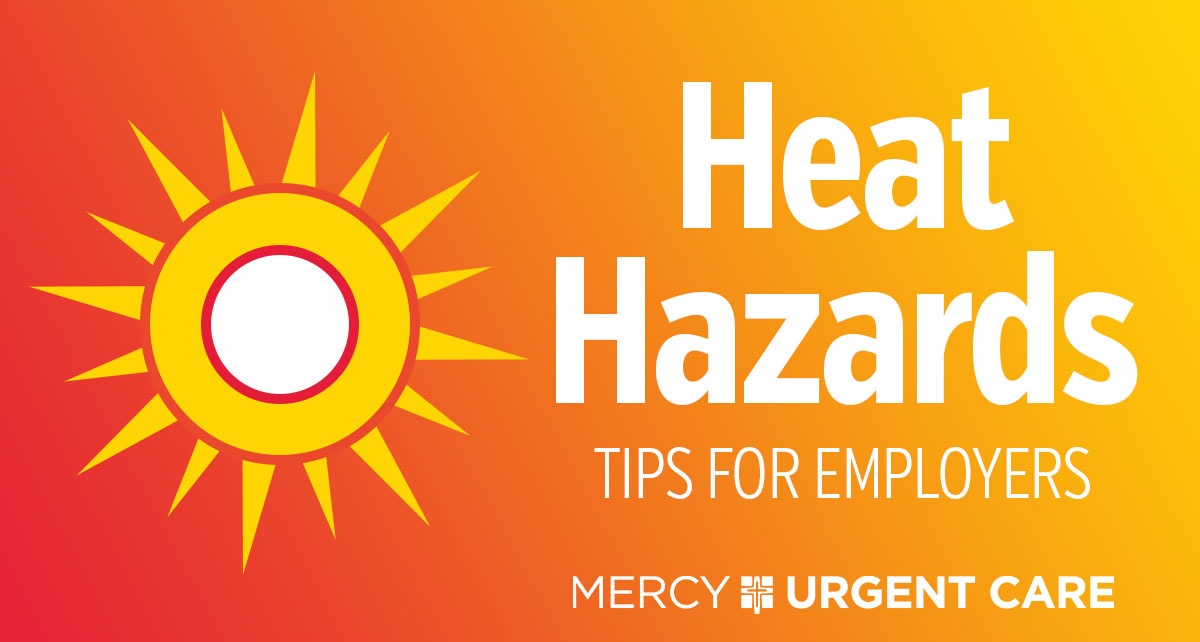Heat-Related Illness

July 14, 2022 by Keely Knopp
For most, the summer months are a favored time to get outdoors and enjoy warm weather activities. However, rising heat during the summer months can pose a significant risk to workers who are exposed to soaring temperatures this time of year. Heat-related illnesses can affect workers in many industries, at both indoor and outdoor worksites, so employers need to be familiar with the dangers and preventative measures of hyperthermia to protect their employees.
Some job-related risk factors include:
- Outdoor work in warm weather
- Heat sources such as ovens, fires or hot tar
- Strenuous physical activity
- Heavy or non-breathable work clothes
When these or other heat hazards are present or expected in the workplace, employers should plan to protect workers accordingly: Consider creating and sharing a heat illness plan with supervisors and employees to ensure that everyone is aware of heat illness circumstances, symptoms and mitigation strategies. Here are a few things to keep in mind when coming up with your company’s specific plan:
- Who will provide oversight on a daily basis?
- What procedures can help acclimate new employees and build heat tolerance?
- Temporary workers may be more susceptible to heat and require closer supervision.
- Workers returning from extended leave (typically defined as more than two weeks) may also be at increased risk.
- How can supervisors ensure that first aid is adequate?
- What engineering controls and work practices will be used to reduce heat stress?
- How will we determine if the total heat stress is hazardous?
- What training will be provided to workers and supervisors?
Several types of heat-related illness can affect workers, and some of the symptoms are non-specific. This means that when a worker is performing physical labor in a warm environment, any unusual symptom can be a sign of overheating.
| Heat-Related Illness | Symptoms and Signs |
| Heat stroke | • Confusion • Slurred speech • Unconsciousness • Seizures •Heavy sweating, or hot, dry skin • Very high body temperature • Rapid heart rate |
| Heat exhaustion | • Fatigue • Irritability • Thirst • Nausea or vomiting • Dizziness or lightheadedness • Heavy sweating •Elevated body temperature or fast heart rate |
| Heat rash | • Clusters of red bumps on skin, which often appear on neck, upper chest, and skin folds |
| Rhabdomyolysis (muscle breakdown) | • Muscle pain • Dark urine or or reduced urine output • Weakness |
Employers and workers should become familiar with these heat-related symptoms, and when any of these symptoms are present, promptly provide first aid. Time is of the essence, as these conditions can worsen quickly and result in serious injuries or even fatality.
Remember: When in doubt, help cool down the worker and call 911.
Other first aid suggestions for suspected heat illness include:
- Taking the affected worker to a cooler area (such as a shaded or air conditioned space).
- Cooling off the worker immediately with ice or cool water.
- Removing the outer layers of clothing, especially heavy protective clothing.
- Placing ice or cold, wet towels on the head, neck, trunk, armpits, and groin.
- Using fans to circulate air around the worker.
- Staying with the affected worker. Never leave someone with heat-related illness alone, as symptoms can worsen rapidly.
- Calling 911 if symptoms do not improve.
Source: U.S. Department of Labor, OSHA

